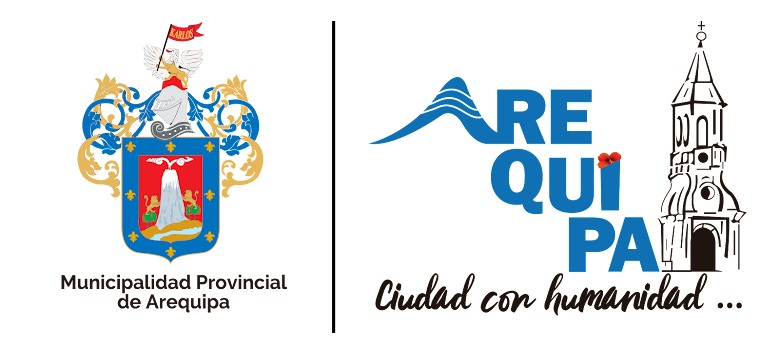(Español)
Allí funcionó el Seminario de San Jerónimo, el centro cultural más importante de las ideas en Arequipa, a comienzos del siglo XIX, cuando era rector el obispo Pedro José Chaves de la Rosa. Allí también se ubicaron el antiguo local de la Corte Superior de Justicia de Arequipa y la prefectura departamental, que en 1883 fue la sede de la Casa de Gobierno, cuando Arequipa fue la capital del país. Juan Guillermo Carpio Muñoz en su trabajo titulado “La nomenclatura de las calles de la Arequipa republicana”, publicado en su colección “Texao. Mostajo y Arequipa”, menciona que la calle San Francisco cambió de nombres entre los años 1825, 1870 y 1888. Antes de 1870, cada cuadra tenía su propio nombre que, según Eusebio Quiroz Paz Soldán, hacía referencia a un edificio representativo o, también, al apellido de alguna familia principal. En ese sentido, los nombres de las cuadras de la calle San Francisco fueron las siguientes: del Seminario, la primera cuadra; del Libertador, la segunda cuadra; de san Francisco, la tercera cuadra; de Las Educandas (hoy Plaza San Francisco). Como recordó el pensador arequipeño Víctor Andrés Belaunde en sus memorias “Trayectoria y destino”, san Francisco fue una calle aristocrática. Allí vivió la familia Martínez Landa, Paz Soldán y Diez Canseco. En la primera cuadra funcionó el Seminario de San Jerónimo, donde se formó la primera generación republicana en Arequipa. En gran parte de su local luego se construyó la sede del Arzobispado. En la tercera cuadra, se ubica la Biblioteca Regional Mario Vargas Llosa y la Biblioteca de Mario Vargas Llosa, que alberga la biblioteca personal del Premio Nobel de Literatura 2010. En la cuarta cuadra de las Educandas, en el siglo XIX funcionó el Colegio de ese nombre, obra del presbítero Jorge del Fierro, que luego del terremoto de 1868 se recompuso, quedando a cargo de las hermanas francesas de los Sagrados Corazones. El nombre de la calle San Francisco responde a la orden religiosa establecida en Arequipa doce años después de la fundación española de la ciudad. La Iglesia de San Francisco luce majestuosa, desde el siglo XVII en que terminó de construirse. Su presencia en nuestra ciudad refuerza el sentimiento religioso de los habitantes de Arequipa.
FUENTE:
Mario Rommel Arce Espinoza. Calles, Plazas y Puentes de Arequipa. Arequipa, 2012.
(English)
There, the Seminary of San Jerónimo, the most important cultural center of ideas in Arequipa, operated at the beginning of the 19th century, when Bishop Pedro José Chaves de la Rosa was rector. There were also located the former premises of the Superior Court of Justice of Arequipa and the departmental prefecture, which in 1883 was the seat of the Government House when Arequipa was the capital of the country. Juan Guillermo Carpio Muñoz in his work entitled "The nomenclature of the streets of the Republican Arequipa", published in his collection "Texao. Mostajo and Arequipa ", mentions that San Francisco street changed names between 1825, 1870 and 1888. Before 1870, each block had its own name that, according to Eusebio Quiroz Paz Soldán, referred to a representative building or the last name of some main family. In that sense, the names of the blocks of San Francisco Street were the following: from the Seminary, the first block; del Libertador, the second block; of San Francisco, the third block; of Las Educandas (today Plaza San Francisco). As the Arequipa thinker Víctor Andrés Belaunde recalled in his memoirs "Trajectory and destiny", San Francisco was an aristocratic street. There lived the Martínez Landa family, Paz Soldán and Diez Canseco. In the first block worked the Seminary of San Jerónimo, where the first Republican generation was formed in Arequipa. In much of its premises, the headquarters of the Archdiocese was built. The third block houses the Mario Vargas Llosa Regional Library and the Mario Vargas Llosa Library, which houses the personal library of the 2010 Nobel Prize for Literature. In the fourth block of the Educandas, in the 19th century the Colegio de name, work of the priest Jorge del Fierro, who after the earthquake of 1868 was recomposed, being in charge of the French sisters of the Sacred Hearts. The name of San Francisco Street responds to the religious order established in Arequipa twelve years after the Spanish foundation of the city. The Church of San Francisco looks majestic, from the seventeenth century when it was finished. Its presence in our city reinforces the religious feeling of the population of Arequipa.
SOURCE: Mario Rommel Arce Espinoza. Streets,Squares and Bridges of Arequipa. Arequipa, 2012
.

